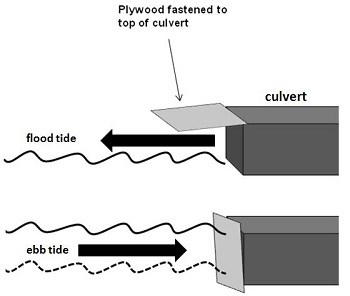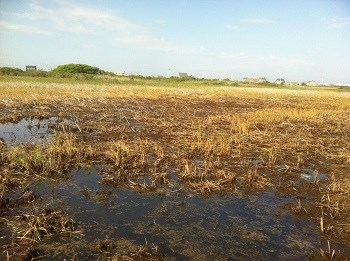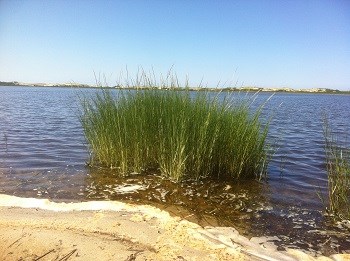
Image by Stephen Smith 
Photo by Stephen Smith The use of a reverse tide gate in East Harbor has accelerated the process of restorative vegetation change that could not be achieved with the present structural limitations on tidal flow. The ideal solution is to facilitate even more tidal exchange so that water levels may reach elevations similar to those obtained using the one-way gate. In the case of East Harbor, the construction of a larger conduit (e.g., multiple culverts, open channel, etc.) is limited by the amount of undeveloped land that could be used for such purposes. Thus, an adaptive management plan centered on manipulating water levels could be quite useful from the standpoint of advancing restoration while any future changes in tidal exchange capacity are deliberated. From a broader standpoint, this technique might be applicable to other locations with similar conditions and/or management history. 
Photo by Stephen Smith For more information about this project please contact Stephen Smith (Plant Ecologist) at e-mail us. |
Last updated: April 29, 2015
